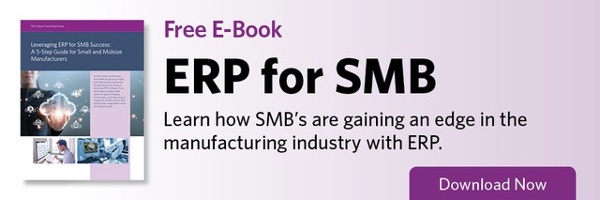Is operating under one ERP system a requirement for successful subsidiary integration?
The rise of globalization and e-commerce, among other sources of financial pressures, has led to an uptick in mergers and acquisition (M&A) activity in a number of industries. For example, one Deloitte report found that 70% of large life sciences companies expected to be involved in some kind of M&A activity over the next three years.
As today’s companies grow and diversify, it may seem like the most efficient solution is to move all subsidiaries under the same ERP system. But is a singular parent ERP system always the best option?
Here are three important questions to ask when deciding whether to keep all subsidiaries under your parent ERP system.
1. Does the parent ERP system fulfill the subsidiary’s unique business needs?
It may seem like the most sensible move is to have  subsidiaries roll up into the corporate ERP solution, particularly if you’ve already invested in the infrastructure and overhead of a blockbuster system. However, in some cases, especially if your subsidiary has a drastically different business model or a distinct product mix, a large enterprise system might actually lack the critical functionality smaller businesses rely on. This could lead to subsidiaries adopting the use of Excel spreadsheets and bolt-on third-party solutions, leading to expense, inefficiency and a potential risk of error. Take stock of the subsidiary’s business needs and how the parent system may be able to be reconfigured to meet these requirements. In some cases, the adoption of an ERP system specific to subsidiary operations is simpler than retooling a rigid piece of legacy ERP software to carry out a function it was never built to execute.
subsidiaries roll up into the corporate ERP solution, particularly if you’ve already invested in the infrastructure and overhead of a blockbuster system. However, in some cases, especially if your subsidiary has a drastically different business model or a distinct product mix, a large enterprise system might actually lack the critical functionality smaller businesses rely on. This could lead to subsidiaries adopting the use of Excel spreadsheets and bolt-on third-party solutions, leading to expense, inefficiency and a potential risk of error. Take stock of the subsidiary’s business needs and how the parent system may be able to be reconfigured to meet these requirements. In some cases, the adoption of an ERP system specific to subsidiary operations is simpler than retooling a rigid piece of legacy ERP software to carry out a function it was never built to execute.
2. Does the parent ERP system meet the distinct compliance requirements of each subsidiary?
As larger corporations grow, adding businesses to their purview, ERP compliance requirements can become a concern. This is not only an issue when venturing into new geographic territory but also when diversifying your business portfolio. A US-based biotech manufacturer who opens a plant in Europe will face a new set of regulatory expectations, not only for its operations and products but also its ERP system. Likewise, if you’re a large manufacturer who’s made your money producing jet engines and you acquire a small x-ray manufacturer, your shared ERP system will be subject to the requirements of more than one regulatory body. Is your parent ERP system able to shoulder these compliance needs, or are multiple systems a safer setup?
3. Does having a single ERP system actually save time and money?
Having multiple systems can be a roadblock to integration. Depending on the circumstances, your ability to implement repeatable processes and consolidate operations will be highly dependent upon moving to a singular ERP system. Conversely, in other cases, it could mean child companies conforming to a system that fails to meet their operational needs. In the short-term this could contribute to employee frustration and poor production performance. But in the long run, if the parent ERP system’s functionality is not setup to support a child company’s evolving needs, it could significantly affect the subsidiary’s ability to meet its potential – and make its expected contributions to your bottom line. Think beyond the integration phase to ensure you’ve chosen an ERP system that will enable subsidiary growth.
Conclusion
It’s the goal of any large company to cultivate a unified culture as it assimilates new businesses and teams. Your ERP system may seem like an obvious integration tool; however, don’t proceed blindly with your parent company’s solution. A round hole isn’t built to fit a square peg, no matter its size. Counter to conventional wisdom, for many, investing in an independent subsidiary-specific ERP system may be a necessary step in ensuring your long-term success.

